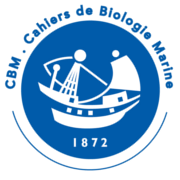Single station-restricted plankton distribution and Levant occurrence of a copepod, Acartia (Hypoacartia) adriatica with change in P5 as compared to Adriatic and Aegean environments
- Authors:
-
DUMAN Güler Sıla,
MUTLU Erhan,
TERBIYIK KURT Tuba,
KARACA Doğukan,
UYSAL Zahit
- Keywords:
-
zooplankton;
copepod;
new record;
anatomical change;
turkish levantine sea;
modified p5
- Abstract:
- The Mediterranean is well-known for its rich biodiversity among the semi-enclosed seas which was affected from atmospheric-sea interactions coupled with globally ocean oscillations and El Nino as well as from the basin-wise decadal Bimodal Oscillating System (BiOS) and the Atlantic rim current. Besides invasion of non-indigenous species (NIS) in Levant Sea, to the Turkish coastal water recent introduction of Mediterranean indigenous species (IS) which are common in Western Mediterranean and Adriatic Sea is noteworthy to mention. During a study on mesozooplankton distribution along the Turkish Mediterranean coastal waters in summer 2019, one calanoid copepod species, Acartia (Hypoacartia) cf. adriatica which is widely distributed in Italian coasts followed by the Aegean Sea was identified for the first time for the Levant Sea and found numerous at one of 67 sampling stations in the study area. However, leg P5 of both female and male specimens was found to have slight differences as compared to the original drawings of A. (H.) adriatica found in Adriatic and Aegean populations. Furthermore, abundances of five phytoplankton species (two of them common in the Adriatic Sea) were estimated to be 50 to 100 fold higher at this particular station compared to the rest of the stations. Physicochemical (relatively lower salinity and unusually high nutrient levels during the summer period in Levantine basin) and biological properties of this single station fell apart from the neighboring stations. Previously, 17 gelatinous species were recorded in the Turkish seas in 2019-2020 when A. (H) cf. adriatica was recorded in the Levant basin and slight differences in P5 of female and male specimens compared to Adriatic and Aegean specimens were observed for the first time. If A. (H.) cf. adriatica from the Levant basin is a separate species from that of the Adriatic Sea, the migration could not be proposed (at least from W Mediterranean), or it should be considered as a possible migration from the Aegean Sea population, which is cl
- Résumé :
- Distribution restreinte du plancton à une seule station et présence au Levant d'un copépode, Acartia (Hypoacartia) adriatica, avec changement de P5 par rapport aux environnements de l'Adriatique et de la mer Égée. La Méditerranée est bien connue pour sa riche biodiversité parmi les mers semi-fermées, qui a été affectée par les interactions atmosphère-mer couplées aux oscillations océaniques globales et à El Niňo, ainsi que par le système d'oscillation bimodale décennal (BiOS) à l'échelle du bassin et le courant de bord de l'Atlantique. Outre l'invasion d'espèces non indigènes (ENI) dans la mer du Levant, il convient de mentionner l'introduction récente dans les eaux côtières turques d'espèces indigènes méditerranéennes (EI) qui sont communes en Méditerranée occidentale et dans la mer Adriatique. Au cours d'une étude sur la distribution du mésozooplancton le long des eaux côtières méditerranéennes turques au cours de l'été 2019, une espèce de copépode calanoïde, Acartia (Hypoacartia) cf. adriatica, qui est largement distribuée sur les côtes italiennes puis dans la mer Égée, a été identifiée pour la première fois dans la mer du Levant et a été trouvée en grand nombre dans l'une des 67 stations d'échantillonnage de la zone d'étude. Cependant, la patte P5 des spécimens femelles et mâles présentait de légères différences par rapport aux dessins originaux d'A. (H.) adriatica trouvés dans les populations de l'Adriatique et de la mer Égée. En outre, les abondances de cinq espèces de phytoplancton (dont deux sont communes dans la mer Adriatique) ont été estimées 50 à 100 fois plus élevées dans cette station particulière que dans les autres stations. Les propriétés physicochimiques (salinité relativement faible et niveaux de nutriments inhabituellement élevés pendant la période estivale dans le bassin Levantin) et biologiques de cette seule station se distinguent des autres stations. Précédemment, 17 espèces gélatineuses ont été enregistrées dans les mers turques en 2019-2020 lorsque A. (H) cf. adriatica a été enregistré
- Supplementary Material:
- [1] ElectronicSupplementalMaterialCBMClearR2.pdf : Electronic supplemental material of “Single station-restricted plankton distribution and Levant occurrence of a copepod, Acartia (Hypoacartia) adriatica with change in P5 as compared to Adriatic and Aegean environments”

